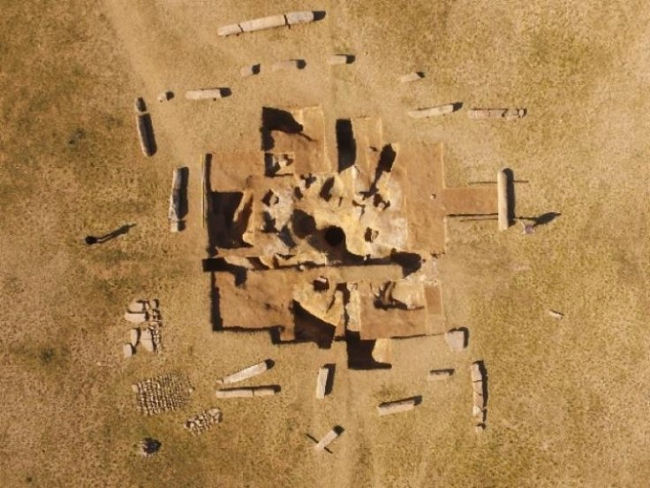Turkish monument 1,300 years old discovered in the Mongolian steppe
Archaeologists have discovered a unique monument, estimated from the eighth century, in the steppe of Mongolia.
The area consists of a square stone coffin, surrounded by 14 large stone pillars covered with Turkish Runic words. These stone pillars are one of the largest structures found in Mongolia.

Based on data from the system (runes) (Rune is a alphabetical system used by Northern Europeans from the 1st century until the middle of the Middle Ages. In addition to functions as letters to write, runes still used as a system of symbols for magic and divination) and vestiges of ancient ruins, experts believe that this work belongs to a king, possibly Bilge Qaghan, Qaghanate's ruler Turkey, a nomadic federation between 716 and 734 SCN.
This king also became the highest commander during the reign of Bilge, Tengri Qaghan (734-741).
Researchers say the inscription on the stone columns sheds light on how the power structure in eastern Mongolia 1,400 years ago was established.
Main author Takashi Osawa said: "This memorial will show the power relationship of the rulers in the eastern region of Qaghanat Turkey and their territories as well as political relations, Military with Mongolian tribes, such as the Khitan, Tatabi and Tatar.
"In addition, the arrangement of stone columns on the plateau will also provide important information to discuss the religious ideas and perspectives of the ancient nomads," he added.
See more:
- Korean researchers found 2,000-year-old mummies in Mongolia
- 10 little things to know about the notorious Mongol leader Genghis Khan
- Discovered animal bones, stone tools 45,000 years old in ancient Chinese caves
You should read it
- Discover 10 8000 year old cave paintings in Turkey
- Found the Roman ancient water tank under the warehouse in Turkey
- Discovered the 2800-year-old ancient seed found in Turkey
- 2,000-year-old olive oil factory discovered in Turkey
- Discover 2,600-year-old theater walls in Turkey
- Find new evidence in the medieval cemetery in Ii Hamina
 The remains of dinosaur suspects were discovered in Uttarakhand, India
The remains of dinosaur suspects were discovered in Uttarakhand, India Publish a 3D dinosaur skull print plan of 200 million years old
Publish a 3D dinosaur skull print plan of 200 million years old First evidence of glass fabrication in sub-Saharan Africa was found
First evidence of glass fabrication in sub-Saharan Africa was found Found a 10,000 year old colored pencil
Found a 10,000 year old colored pencil Signs that a part of mainland Australia once belonged to North America
Signs that a part of mainland Australia once belonged to North America